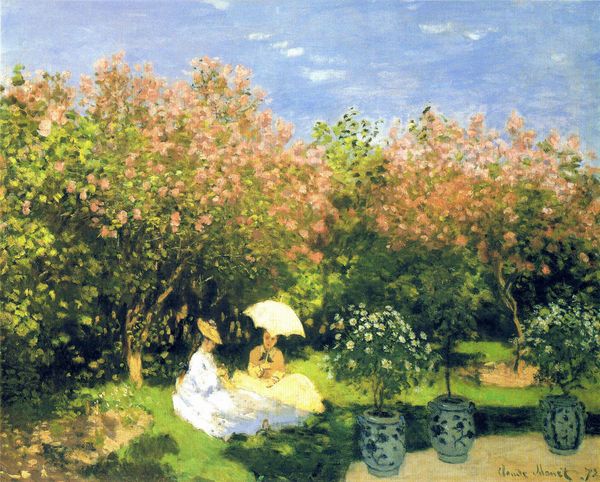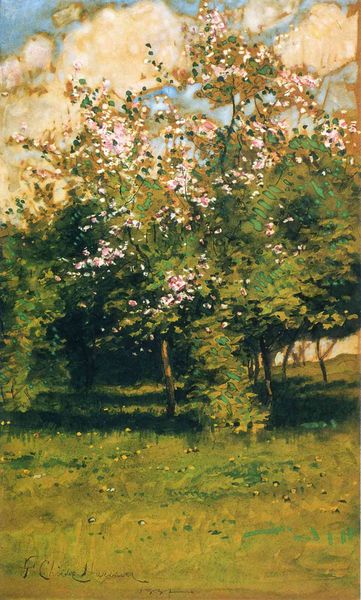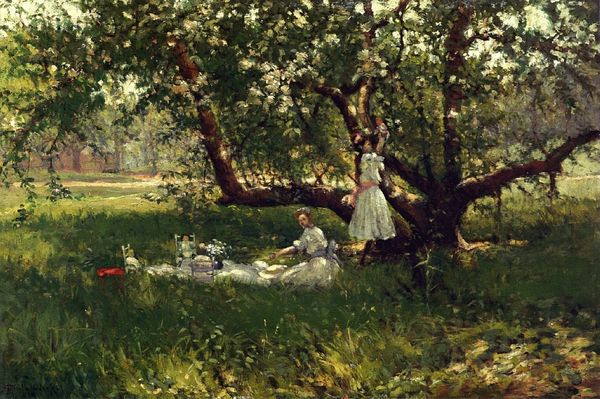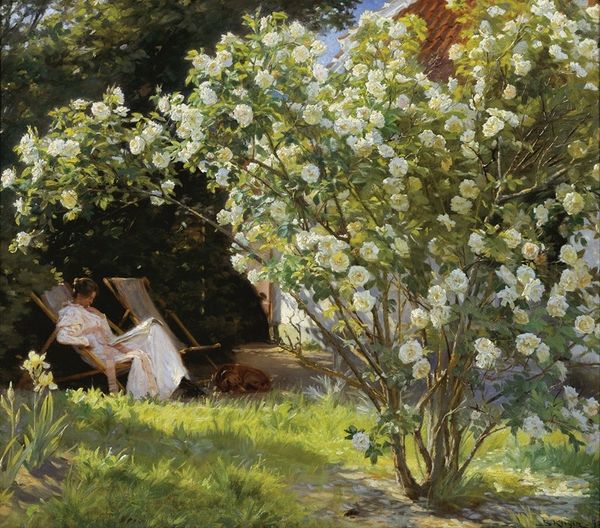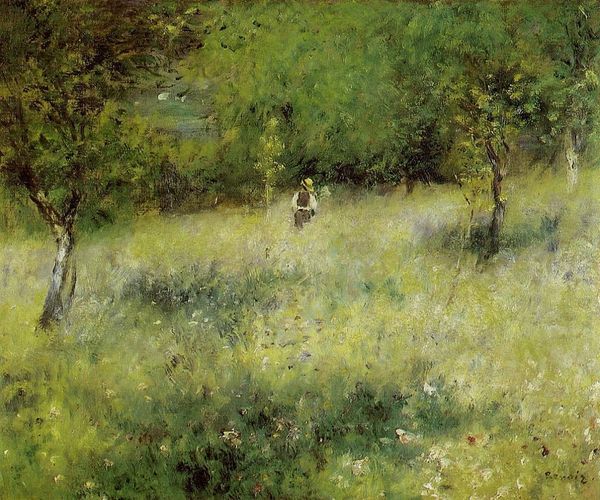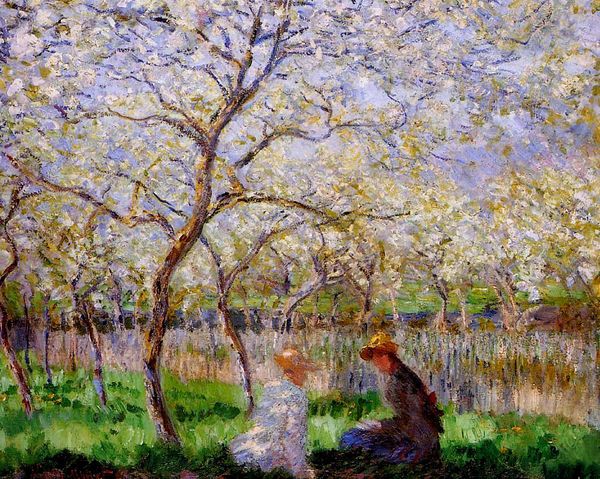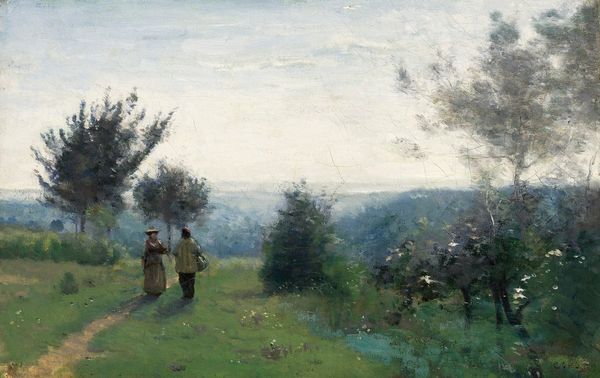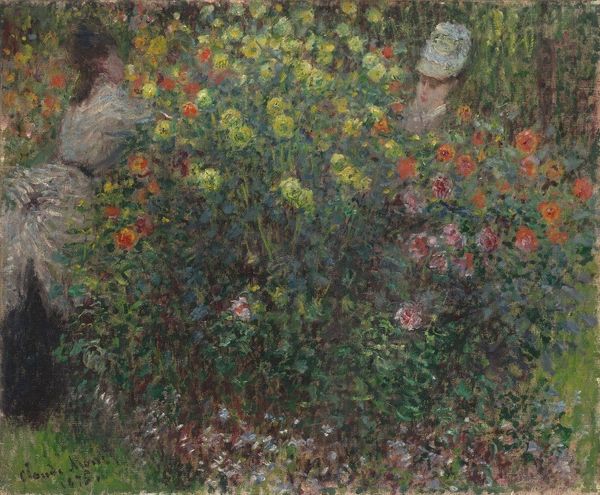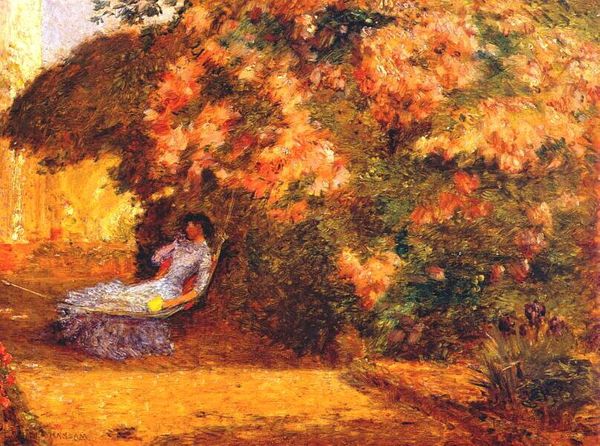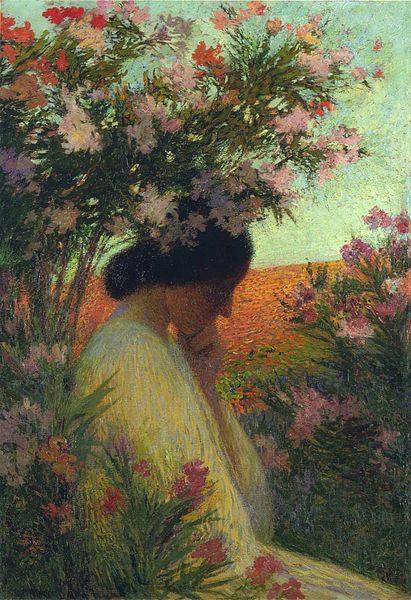
plein-air, oil-paint
#
portrait
#
tree
#
impressionism
#
grass
#
impressionist painting style
#
plein-air
#
oil-paint
#
landscape
#
flower
#
impressionist landscape
#
figuration
#
plant
Dimensions: 65.5 x 50 cm
Copyright: Public domain
Editor: Take a look at Claude Monet’s "Lilacs, Grey Weather," painted in 1873 using oil on canvas. The painting features a group of figures relaxing under the shade of a large lilac tree. What I find most striking is the almost dreamlike quality, created by the soft brushstrokes and muted colors. How do you interpret this work? Curator: This work offers a fascinating glimpse into the social landscape of the time, doesn’t it? Think about the Impressionists, seeking to capture fleeting moments of contemporary life. "Lilacs, Grey Weather" moves away from grand historical narratives and towards personal experience. Editor: I see that shift clearly here, but is there something in this representation of leisure that made it acceptable or understandable for its contemporary viewers? Curator: Absolutely. The emerging middle class had new opportunities for leisure, and paintings like this validated that lifestyle. They offer a romantic vision of the world available for purchase. Also, consider Monet's technique: working en plein air meant capturing light and atmosphere, yes, but also making the act of painting itself more visible and performative. It transformed him into a kind of modern worker, albeit an artist, whose product reflected these values. Do you agree? Editor: I do! I had been focused solely on its aesthetic qualities and missed those contextual aspects entirely. The way it reflected emerging social and class norms gives it greater depth. Curator: Precisely. By exploring the cultural and historical forces at play, we get a richer appreciation for its initial impact and continued relevance. Editor: It’s incredible how a seemingly simple scene of people under a tree can be so rich with social meaning. Thanks for shedding light on that. Curator: My pleasure. Every artwork offers a portal into the world that created it.
Comments
No comments
Be the first to comment and join the conversation on the ultimate creative platform.
